|
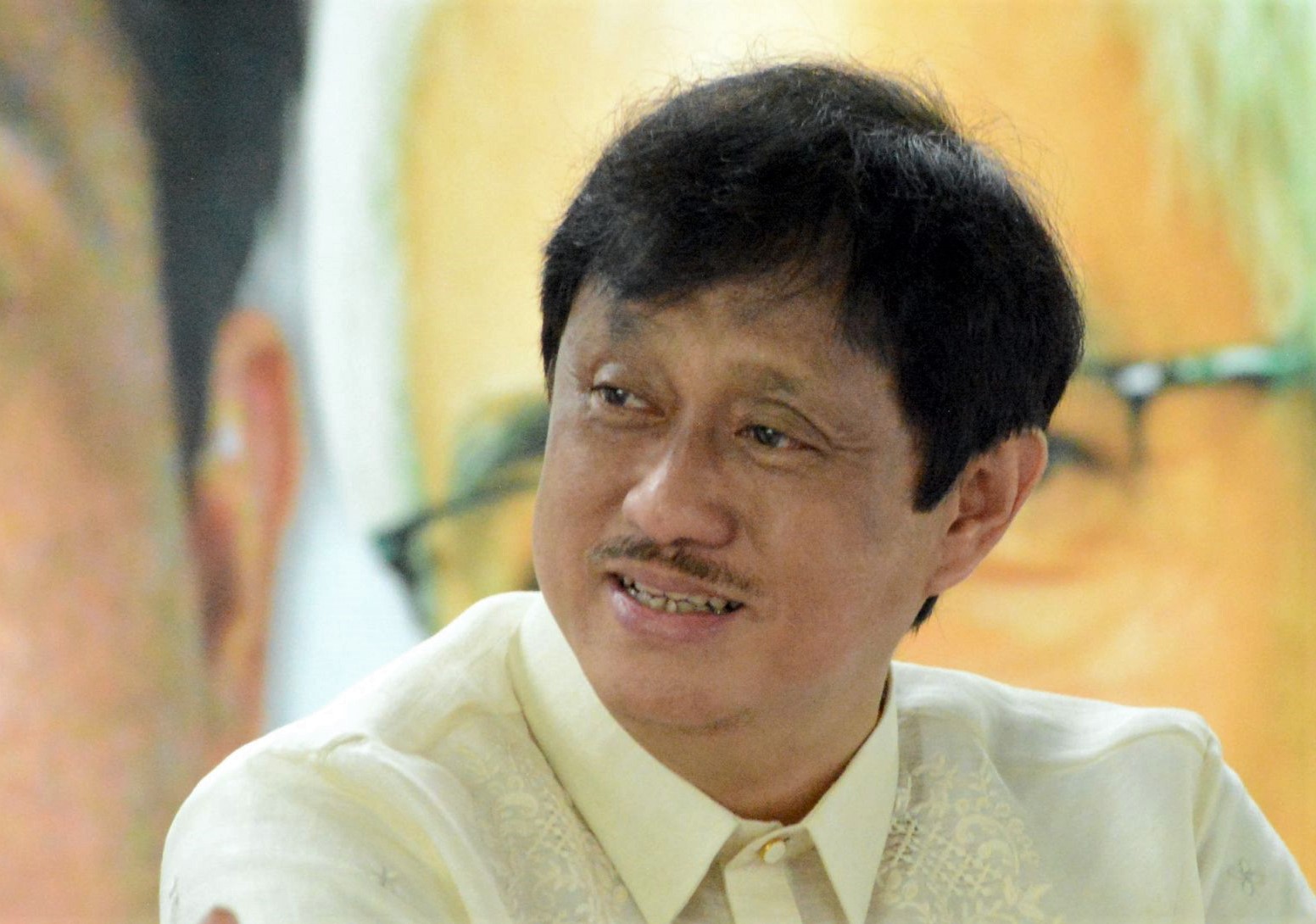
CONDRADO M. ESTRELLA III
Secretary
Department of Agrarian Reform
July 1, 2022 - present
Estrella is an AB History and political science graduate, and the son of former congressman Robert M. Estrella Jr.
Milestones:
- He was a provincial board member and Chairman of the Committee on Agrarian Reform from 1980-1985.
- He was elected to the House of Representative from 1987 to 2010, representing Pangasinan's 6th District.
- In the 8th congress, he was one of the youngest elected representative at age 26. During this time, he became an active member of the Committee on Agrarian Reform.
- He authored more than 90 measures in the 18th Congress.
- Among the bills he filed in the last three years include proposals to strengthen the resiliency of farmers against climate change, improve the financing system for farmers and fisherfolk, and establish "instructional gardening programs" in all elementary and secondary schools in the Philippines.
- In 2013, he became the party-list representatives of Abono, succeeding his brother Robert Raymund Estrella.
|

Bernie F. Cruz
Acting Secretary
Department of Agrarian Reform
October 28, 2021 - June 19, 2022
President Rodrigo Duterte has tapped DAR Undersecretary Bernie Cruz to be the acting chief of Department of Agrarian Reform (DAR) signing his appointment paper on Oct. 28, 2021.
Cruz served as DAR Undersecretary for Foreign Assisted Projects Office (FASPO) before his appointment as DAR Acting Secretary and under Special Order No. 523, series of 2018, acted as the project implementation officer of the DAR official development assistance (ODA) portfolio.
Milestones:
- Handled the Mindanao Sustainable Agrarian and Agriculture Development (MinSAAD), Project, Convergence on Value Chain Enhancement for Rural Growth and Empowerment (Project ConVERGE), and the Italian-Agrarian Reform Communities Development Support Project (IARCSDP).
- Turned over 313 water system projects nationwide, in cooperation with the National Irrigation Administration, with the total project cost amounting to P2-billion.
- The DAR was also able to construct 177 bridge project nationwide with a total of 10,436 linear meters, implemented under the Tulay ng Pangulo Para sa KaunlaranProject.
- The Project ConVERGE implemented in Region 9,10 and CARAGA benefitted a total of 11,560 ARBs (33,029 households) from 24 farm to market roads, one bridge, 11 warehouses, 2 potable water supply, 13 solar dryers and 1 irrigation project.
- The IARCSDP provided infra projects to 18,000 ARBs (53,000 households) from Sarangani, Sultan Kudarat, Lanao del Sur and Maguindanao. A 1.5-billion loan was provided to the government to implement these projects.
- The MINSAAD Project in the provinces of Lanao del Norte, Bukidnon, Davao de Oro, Davao del Sur, North Cotabato, South Cotabato and Sultan Kudarat benefited from 38 farm to market roads, 14 bridges, 19 irrigation, 65 post-harvest facilities, 25 rural water supply, 65 agribusiness dev’t, 54 agroforestry development and 290 people’s organization (32,623 members. Around 69,091 ARBs benefit from the said projects.
|
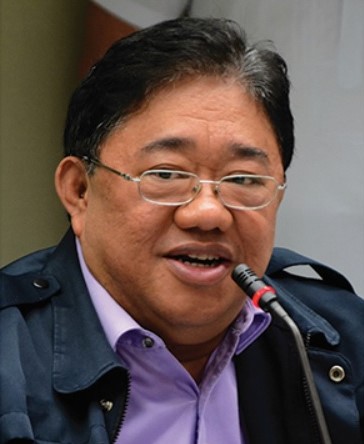
John R. Castriciones
Secretary
Department of Agrarian Reform
December 1, 2017 - October 6, 2021
After President Rodrigo R. Duterte named him Acting Secretary in September 2017, Castriciones immediately crafted his thrusts and directions for the next five years. These directions are aligned with Pres. Duterte's national goal of eradicating corruption, addressing social justice and improving the economic poor farmers.
The Secretary's thrusts and directions are:
- Initiate and streamline legal procedures;
- Increase issuance of certificates of landownership awards (CLOAs);
- Implement programs that will help farmers retain their CLOAs and stay in their farm;
- Use convergence of line departments to give support to the farmers;
- Utilize the family as the focal point for agrarian reform;
- Accomplish placements and promotion of DAR employees affected by the Rationalization Plan.
|
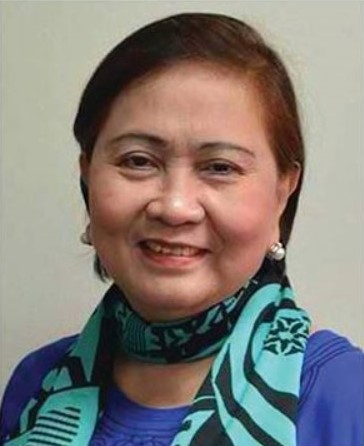
Rosalina L. Bistoyong
OIC - Secretary
Department of Agrarian Reform
September 8, 2017 - December 1, 2017
Prior to her short stint as DAR Seceretary, she has been with the department as Undersecretary for support services. She served well as DAR Secretary having been an agrarian reform advocate and an active leader.
Milestones:
- Provided credit to agrarian reform beneficiaries through the agrarian production credit program, which facilitated the increase in membership of more than 20,000 agrarian reform beneficiaries to DAR cooperatives;
- Asisted more than 50,000 agrarian reform beneficiaries in accessing micro-finance services for their agri-business.
|

Rafael V. Mariano
OIC - Secretary
Department of Agrarian Reform
July 1, 2016 - September 8, 2017
He served well as DAR Secretary having been an agrarian reform advocate, educator and an active leader. His appointment as Secretary is one of the fulfillment of President Rodrigo Duterte's promises for socio-economic reform of farming communities.
Milestones:
- Convened the Presidential Agrarian Reform Council after 10 years of inactivity;
- Opened the gates of the department for farmers and protesters after 2 decades of having its gates shut;
- Spearheaded installations of farmers to their lands;
- Ordered the distribution of hundred of hectares of Hacienda Luisita;
- Conducted dialogues and collavorative work for the welfare of agrarian reform beneficiaries.
|

Virgilio R. de Los Reyes
Secretary
Department of Agrarian Reform
July 1, 2010 - July 1, 2016
He served well as DAR Secretary having been an agrarian reform advocate, lawyer, educator, and an active leader.
His administration can be attributed to the institutionalization of work systems in DAR to improve program implementation. Some of which are the Operationalization of the LTI Operational Tool (OpTool) to track status of landholding for targeting and monitoring purposes; Full operationalization and utilization of Legal Case Monitoring System (LCMS) where stakeholders can monitor the status of cases; and Full operationalization of the Legal Information System (LIS) which contains all related laws, issuances, Supreme Court Decisions, etc. on CARP implementation. His adminsitration also aggressively utilized Alternative Dispute Resolution (ADR) Scheme in resolving and reducing conflicts into court cases.
Further, training nterventions for ARBs; construction and rehabilitation of infrastructure facilities; and access of ARB households to basic social services to ensure holistic support for the beneficiaries became the focus of this administration.
|
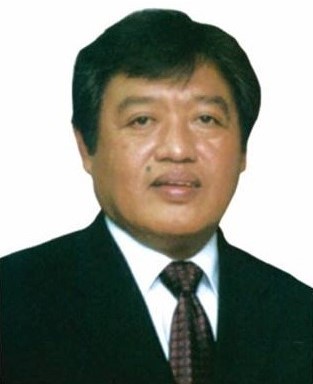
Nasser C. Pangandaman
Secretary
Department of Agrarian Reform
July 10, 2005 - June 30, 2010
In support to Gloria Macapagal-Arroyo’s poverty alleviation thrusts, the administration of Secretary Hernani Braganza, Secretary Roberto Pagdanganan, Secretary Jose Mari Ponce, Secretary Rene Villa and Secretary Nasser Pangandaman embarked on the Bayan-Anihan CARP framework. This framework provides for the transformation of the Philippine Countryside into vibrant and dynamic communities through the Program’s focused intervention under the agrarian reform communities (ARC) Strategy.
With this, Program Beneficiaries Development (PBD) component of the DAR increased tremendously thru foreign assisted projects in the agrarian reform communities. Part of its success was brought about by the efficient manner these Secretaries who have handled the development efforts and support services provided in the agrarian reform communities that displayed a bustling and empowered community.
As regards to Agrarian Justice Delivery (AJD), DAR has carried out two programs namely agrarian legal assistance (ALA) under the Bureau of Agrarian Legal Assistance and the adjudication of agrarian cases thru the DAR Adjudication Board (DARAB). From 2001 to 2009, it was a continuing program of agrarian justice delivery. Various mechanisms were instituted to reduce agrarian cases.
The inventory of CARP scope project or ICS was started during Secretary Villa’s administration and continued by the administration of Secretary Pangandaman in order to determine the actual CARP scope of agricultural lands to be distributed. In addition, a task force on problematic landholdings was created to transform problematic landholdings into workable and achievable accomplishments.
|
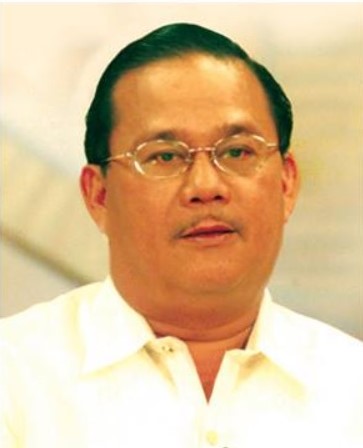
Rene C. Villa
Secretary
Department of Agrarian Reform
August 26, 2004 - July 9, 2005
The inventory of CARP scope project or ICS was started during Secretary Rene Villa’s administration in order to determine the actual CARP scope of agricultural lands to be distributed. In addition, a task force on problematic landholdings was created to transform problematic landholdings into workable and achievable accomplishments.
Secretary Villa also used the Bayan-Anihan CARP framework to continually transform the countryside into vibrant and dynamic communities through the Agrarian Reform Community strategy.
|
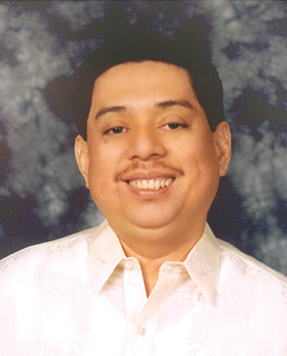
Jose Mari B. Ponce
OIC - Secretary
Department of Agrarian Reform
February 20, 2004 - August 24, 2004
In support to Gloria Macapagal-Arroyo’s poverty alleviation thrusts, the administration of Secretary Secretary Jose Mari Ponce, continued with the implementatiion of the Bayan-Anihan CARP framework which provided for the transformation of the Philippine Countryside into vibrant and dynamic communities through the Program’s focused intervention under the agrarian reform communities (ARC) Strategy.
|
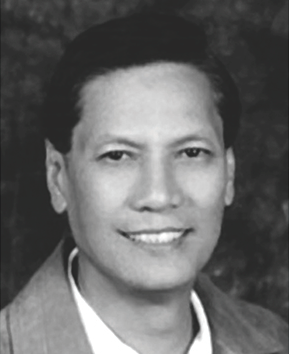
Roberto M. Pagdanganan
Secretary
Department of Agrarian Reform
January 20, 2003 - January 20, 2004
The administration of Secretary Roberto Pagdanganan continued with the Bayan-Anihan CARP Framework to support President Gloria Macapagal-Arroyo’s poverty alleviation thrusts. This framework provides for the transformation of the Philippine Countryside into vibrant and dynamic communities through the Program’s focused intervention under the agrarian reform communities (ARC) Strategy.
With this, Program Beneficiaries Development (PBD) component of the DAR increased tremendously thru foreign assisted projects in the agrarian reform communities. Part of its success was brought about by the efficient manner Secretary Pagdanganan handled the development efforts and support services provided in the agrarian reform communities.
As regards to Agrarian Justice Delivery (AJD), DAR through his leadership carried out two programs namely agrarian legal assistance (ALA) under the Bureau of Agrarian Legal Assistance and the adjudication of agrarian cases thru the DAR Adjudication Board (DARAB). Various mechanisms were instituted to reduce agrarian cases.
|
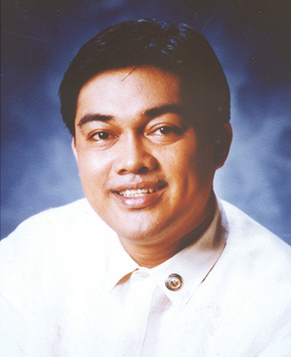
Hernani A. Braganza
Secretary
Department of Agrarian Reform
February 12, 2001 - January 15, 2003
In support to Gloria Macapagal-Arroyo’s poverty alleviation thrusts, the administration of Secretary Hernani Braganza started to embark on the Bayan-Anihan CARP framework. This framework provides for the transformation of the Philippine Countryside into vibrant and dynamic communities through the Program’s focused intervention under the agrarian reform communities (ARC) Strategy.
With this, Program Beneficiaries Development (PBD) component of the DAR increased tremendously thru foreign assisted projects in the agrarian reform communities. Through the leadership of Secretary Braganza, the development efforts and support services provided in the agrarian reform communities displayed a bustling and empowered community.
As regards to Agrarian Justice Delivery (AJD), DAR through Secretary Braganza, carried out two programs namely agrarian legal assistance (ALA) under the Bureau of Agrarian Legal Assistance and the adjudication of agrarian cases thru the DAR Adjudication Board (DARAB).
|
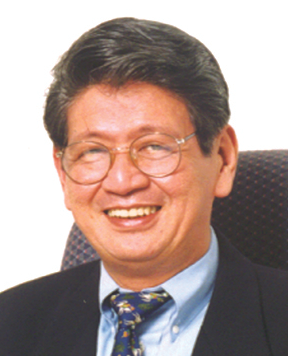
Horacio R. Morales
Secretary
Department of Agrarian Reform
July 1, 1998 - February 11, 2001
It was during the leadership of Secretary Morales that the field personnel were harassed by so many lawsuits filed by disgruntled landowners. Thus, the Agrarian Justice Delivery component was strengthened and enhanced by reinforcing the legal system in order to speed up the resolution of agrarian reform cases. Also, to support the DAR field personnel, the Agrarian Justice Fund and the Agrarian Justice Foundation were created.
With regards to land tenure improvement or LTI, private agricultural lands or PAL which consisted the bulk of agri-lands were to be distributed during Secretary Morales’ governance. To achieve its LAD targets, DAR established two task forces, by type of commodity planted in farm areas, i.e. coconut lands and sugar lands. The objective was to fast track distribution through these land types. Thus, a total of 333, 389 hectares of agricultural lands was distributed or a 9 percent share to the total accomplishment.
For the Program Beneficiaries Development component (PBD), the ARC convergence strategy among DAR, DA and DENR was pursued. This was when President Estrada approved the Convergence Strategy for Sustainable Development of the three agencies through Memorandum Circular No. 1 series of 1999. The DA’s Strategic Agricultural Fisheries Development Zones (SAFDZs), the DAR’s Agrarian Reform Communities (ARCs) and the DENR’s National Integrated Protected Areas (NIPAS) were consolidated to promote sustainable and integrated area development.
|
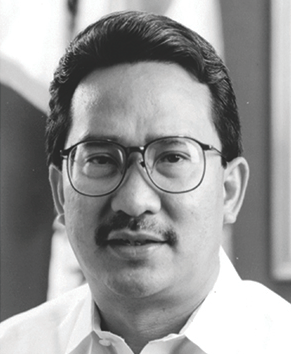
Ernesto D. Garilao
Secretary
Department of Agrarian Reform
June 30, 1992 - June 30, 1998
Secretary Ernesto Garilao’s main thrust when he assumed office was to implement President Fidel Ramos’ goal to carry out a faster, fairer and more meaningful agrarian reform program. To facilitate this, various guidelines and procedures were formulated namely: (hyperlink to Issuances) DAR AO 2, Series of 1992; DAR AO 1, Series of 1993; DAR MC 7, Series of 1993; Joint DAR-LBP AO 3, Series of 1994; DAR AO 1, Series of 1995; DAR AO 2, Series of 1995; DAR AO 2, Series of 1996; DAR AO 4, Series of 1996; DAR AO 2, Series of 1997; and DAR AO 8, Series of 1997. Likewise, various guidelines on land acquisition and distribution (LAD) were revised in order to accelerate the pace of land distribution.
Notably, it was during Secretary Garilao’s leadership that DAR created the Agrarian Reform Communities (ARC) approach to Program Beneficiaries Development or PBD. It provided a window for viewing CARP impact on the lives of rural Filipinos. ARCs converted cold statistics into real indicators of equitable growth thru land tenure improvement and the delivery of basic support services. This caught the interests of other developed countries and many foreign assisted projects supported the DAR thru its ARCs in order to accelerate program implementation in the ARCs.
Further, Secretary Garilao pushed for energizing the bureaucracy by upgrading the DAR personnel thru its 3-year human resource development, thus enhancing the capabilities of line executives, middle managers and technical staff. There was also the development of performance contracting for better and clearer accountabilities by the provincial and regional offices.
Through his leadership and through his proactiveness during deliberations in Congress, the Agrarian Reform Fund Bill was approved into law (RA 8532, Series of 1998)
In a span of six years (1992-1998), Secretary Garilao’s administration was able to distribute a total of 1.9 million hectares of agricultural lands or 49% of the total CARP scope. It should be noted however, that around half of the lands distributed during his term were government owned lands or GOLs which did not require compensation from the government.
|
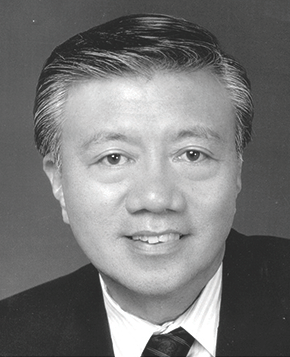
Benjamin T. Leong
Secretary
Department of Agrarian Reform
April 6, 1990 - June 30, 1992
President Corazon Aquino's administration saw many changes in the DAR leadership. According to some observers, this led to lack of continuity in priorities, programs and projects in the Department. Secretary Juico's resignation followed the designation of three Secretaries in a row, namely: Miriam D. Santiago, Florencio B. Abad and Benjamin T. Leong. With the three secretaries came new policies and new perspectives to implement CARP.
Since Secretary Santiago and Secretary Abad's stay were short lived, it was Secretary Benjamin Leong who had the opportunity to continue where Secretary Juico left off. Through his administration, the implementing rules and mechanisms for the different Executive Orders to speed up CARP implementation (405, 406, 407 and 448) were established to:
- Create Agro-Industrial Development Areas (AIDAs) to align programs and projects of CARP implementing agencies;
- Establish CARP Implementing Teams (CITs) from the national to the municipal levels to facilitate identification of priority areas for coverage, solve operating problems and coordinated the delivery of support services;
- Indentify Strategic Operating Provinces where greater part of CARP activities will be concentrated to intend the direct use of resources effectively.
At the end of Secretary Leong’s administration, a total of 170,904 tenants were beneficiaries of Leasehold Operation covering 267,160 hectares. Application of nine corporations for the Stock Distribution Option covering 7,275 hectares were approved and 84 firms distributed 216.2 million of production and profit shares to 81,992 farmworkers. (The Record and Legacy of the Aquino Administration in AR: Executive Summary, Planning Service-DAR)
It was also during this time of the Department that the Agrarian Justice component or AJD was recognized by the CARP public through the development of the Paralegal Program and because of the quasi-judicial power of the DAR through the DARAB (Department of Agrarian Reform Adjudication Board).
|
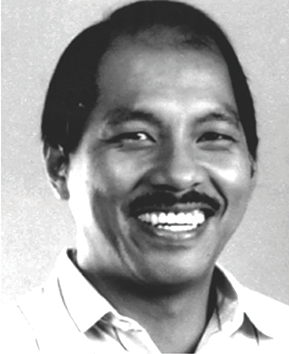
Florencio B. Abad
Secretary
Department of Agrarian Reform
January 4, 1990 - April 5, 1990
The many changes of leadership in DAR during the administration of President Corazon Aquino led to lack of continuity in priorities, programs and projects. However, as an individual whose heart is on the successful implementation of the agrarian reform program, Secretary Abad brought fresh perspective into the Department. However, his term was only short lived since the Commission on Appointment of Congress did not confirm his appointment.
|
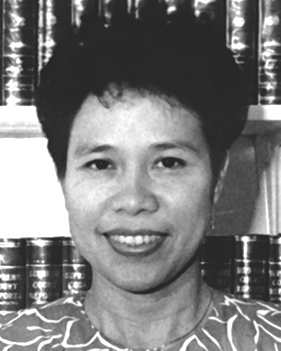
Miriam D. Santiago
Secretary
Department of Agrarian Reform
July 20, 1989 - January 4, 1990
There were many changes of leadership in DAR during the administration of President Corazon Aquino. Although this led to lack of continuity in priorities, programs and projects, it can be said that Secretary Miriam D. Santiago came up with necessary policies and new perspectives to implement CARP.
|
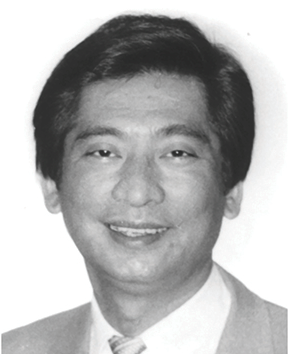
Philip E. Juico
Secretary
Department of Agrarian Reform
June 23, 1987 - July 1, 1989
Secretary Juico was Secretary of the newly re-organized Department of Agrarian Reform (EO 129-A) and sought the implementation of the Comprehensive Agrarian Reform Program. Armed with all the measures to speed up the implementation of the Comprehensive Agrarian Reform Program, he immediately came out with DAR Administrative Order No. 7, Series of 1988 which launched the LISTASAKA land registration program. The program was aimed to get the necessary data that will be used to set and monitor land ownership.
Hopes were high during this time that the program would provide a better indication of the concentration of landholdings than the census data, for it sought to establish a database of agricultural lands according to the retention limits and priorities under CARP.
However, the controversial Garchitorena scam shortened the stay of Secretary Juico as Secretary of DAR. Although he did not have any direct link to the scam, he resigned and was replaced by Secretary Miriam D. Santiago.
|
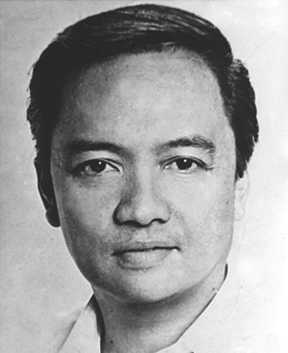
Heherson T. Alvarez
Minister
Ministry of Agrarian Reform
May 1, 1986 - March 7, 1987
After the 1986 Presidential Election, Minister Alvarez was designated as head of the Ministry of Department of Agrarian Reform in President Corazon Aquino’s transition government. He continued with the implementation of PD 27. He ran and won a seat at the Senate after less than a year as Minister of MAR.
|
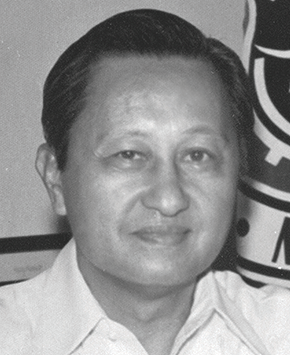
Conrado Estrella
Governor
Land Authority
January 1966 - September 1971
Secretary
Department of Agrarian Reform
September 10, 1971 - April 30, 1986
Secretary Conrado Estrella is credited for carrying out measures to facilitate the implementation of the agrarian reform program under the Marcos administration. Through the initial effort of his administration, a total of 236 municipalities from Luzon and Visayas with a total coverage of 716, 912 hectares involving 292, 429 farmer beneficiaries were under the leasehold by the end of 1971. That same year, through his endeavors the National Land Reform Council for which he was a member approved the acquisition of One hundred seventy three (173) agricultural estates for distribution to tenant-tillers.
As Minister of the Ministry of Agrarian Reform, he was given the authority and power to issue Certificate of Land Transfer and Emancipation Patent.
Secretary Estrella ensured the implementation of PD 27 (The Tenant Emancipation Decree) when the entire country was proclaimed into a land reform area (PD 2). During his term, the tenanted rice and corn lands gave the tenants opportunity to purchase the lands they tilled, while share tenants on lands over 7 hectares became leaseholders.
The Ministry of Agrarian Reform which later became the Department of Agrarian Reform (RA 6389), distributed and titled a total of 260,000 hectares of land in a period of fourteen years. Subsequently, Certificates of Land Transfers (CLTs) in the rice and corn areas were awarded to 250,000 tenant farmers, covering almost half a million hectares, throughout his leadership in the Department. He was also the Governor of the Land Authority from January 1966 to September 1971. In fact, he is credited for the successful implementation of the leasehold program as Governor of the Land Authority in the provinces of Pangasinan, Bulacan, Nueva Ecija, Pampanga, Tarlac, Occidental Mindoro, Camarines Sur, and Misamis Oriental.
|
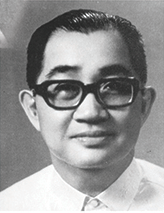
Benjamin M. Gozon
Governor
Land Authority
July 1964 - December 1965
The Land Authority was under the leadership of Governor Benjamin M. Gozon from July 1964 to December 1965. Like Governors Roxas and Perez he also committed to the implementation of RA 3844. As the lead agency in implementing RA 3844 during the Macapagal Administration, the Land Authority sought the agricultural retention limit of the landowners from 300 hectares to 75 hectares. The share tenancy was abolished and the leasehold system was instituted. One of the major thrusts of the Land Authority was to establish owner-cultivatorship and the economic family-sized farm as the basis of Philippine agriculture. As a consequence, it diverted landlord capital in agriculture to industrial development.
Governor Benjamin Gozon continually implemented RA 3844 in Pangasinan, Bulacan, Nueva Ecija, Pampanga, Tarlac, Occidental Mindoro, Camarines Sur, and Misamis Oriental. Through the leadership of Governors Roxas, Perez and Gozon, out of the total scope of 18,377.05 hectares, the Land Registration Authority covered 18,247.06 hectares or generated a 99.29% accomplishment rate . The program benefited 7,466 farmer beneficiaries.
|
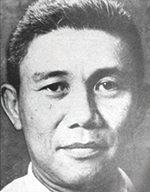
Rodrigo D. Perez, Jr.
Governor
Land Authority
November 1963 - July 1964
The Agriculture Land Reform Code (RA 3844) was signed into law on August 8, 1963. After Governor Sixtor Roxas, Governor Rodrigo D. Perez led the Land Authority from November 1963 to July 1964. Like his predecessor, he also committed to the successful implementation of the the law. As the lead agency in implementing RA 3844 during the Macapagal Administration, the Land Authority sought the agricultural retention limit of the landowners from 300 hectares to 75 hectares. The share tenancy was abolished and the leasehold system was instituted. One of the major thrusts of the Land Authority was to establish owner-cultivatorship and the economic family-sized farm as the basis of Philippine agriculture. As a consequence, it diverted landlord capital in agriculture to industrial development.
Governor Rodrigo Perez continued what Governor Sixto Roxas started in the implementation of RA 3844 in Pangasinan, Bulacan, Nueva Ecija, Pampanga, Tarlac, Occidental Mindoro, Camarines Sur, and Misamis Oriental. His leadership at the Land Authority was contributory in accomplishing the targets of the Macapagal Administration on leasehold. As a result out of the total scope of 18,377.05 hectares, the Land Authority covered 18,247.06 hectares or generated a 99.29% accomplishment rate. The program benefited 7,466 farmer beneficiaries.
|
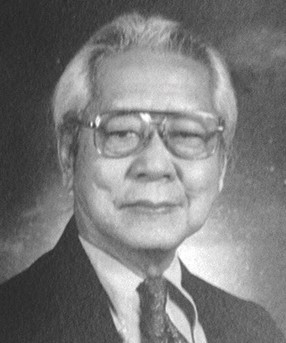
Sixto K. Roxas
Governor
Land Authority
August 1963 - October 1963
The Agriculture Land Reform Code (RA 3844) was signed into law on August 8, 1963. The Land Authority under the auspices of Governor Sixto K. Roxas from August 1963 to October 1963 was committed in its implementation. As the lead agency in implementing RA 3844 during the Macapagal Administration, the Land Authority sought the agricultural retention limit of the landowners from 300 hectares to 75 hectares. The share tenancy was abolished and the leasehold system was instituted. One of the major thrusts of the Land Authority was to establish owner-cultivatorship and the economic family-sized farm as the basis of Philippine agriculture. As a consequence, it diverted landlord capital in agriculture to industrial development.
It was also during the leadership of Governor Sixto Roxas together with Governors Rodrigo Perez, Jr. and Benjamin Gozon that RA 3844 was implemented in Pangasinan, Bulacan, Nueva Ecija, Pampanga, Tarlac, Occidental Mindoro, Camarines Sur, and Misamis Oriental. Out of the total scope of 18,377.05 hectares, the Land Registration Authority covered 18,247.06 hectares or generated a 99.29% accomplishment rate. The program benefited 7,466 farmer beneficiaries. Governor Roxas during his term eagerly attended hearings to fight for the funding of RA 3844.
|